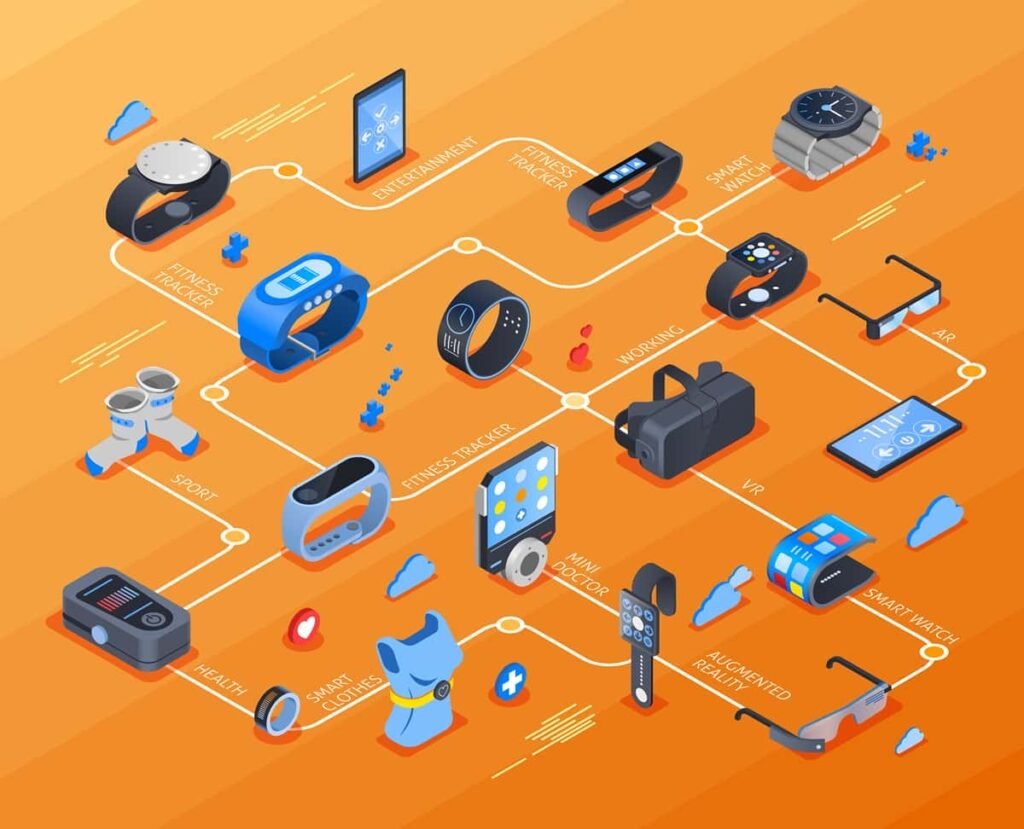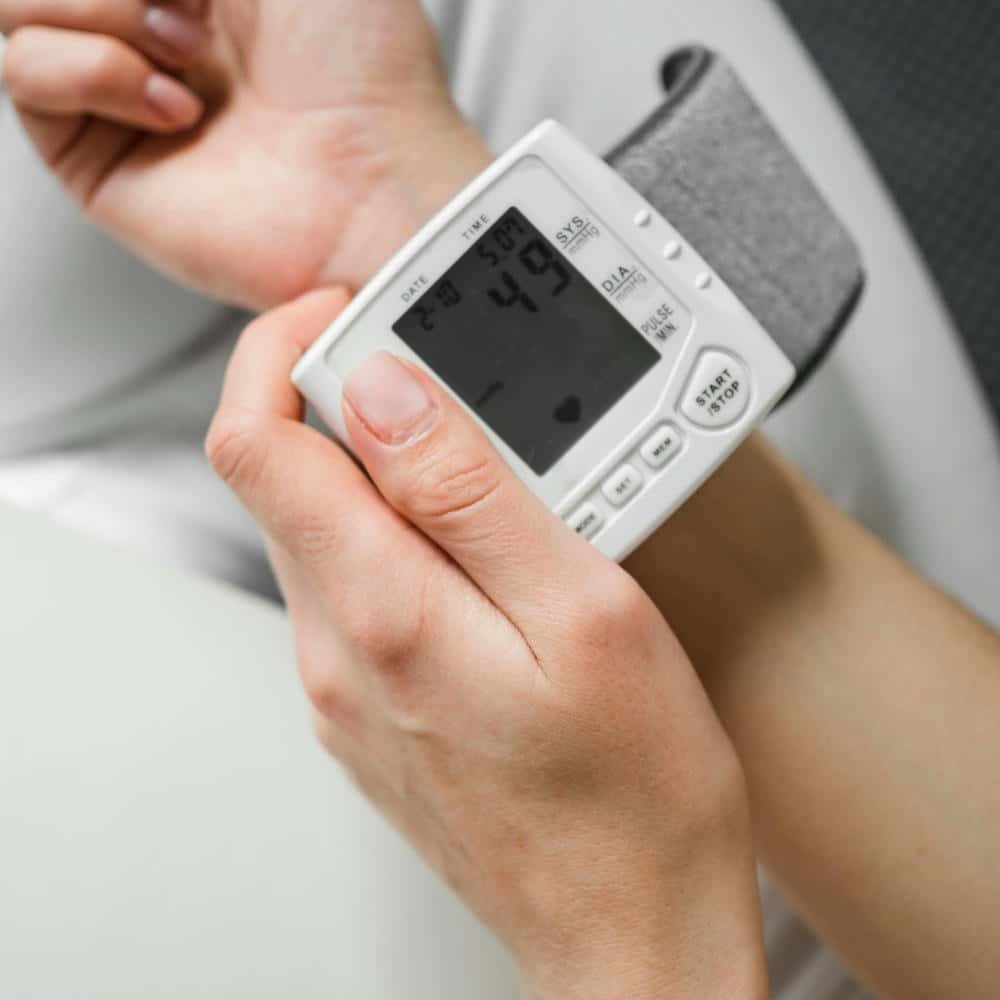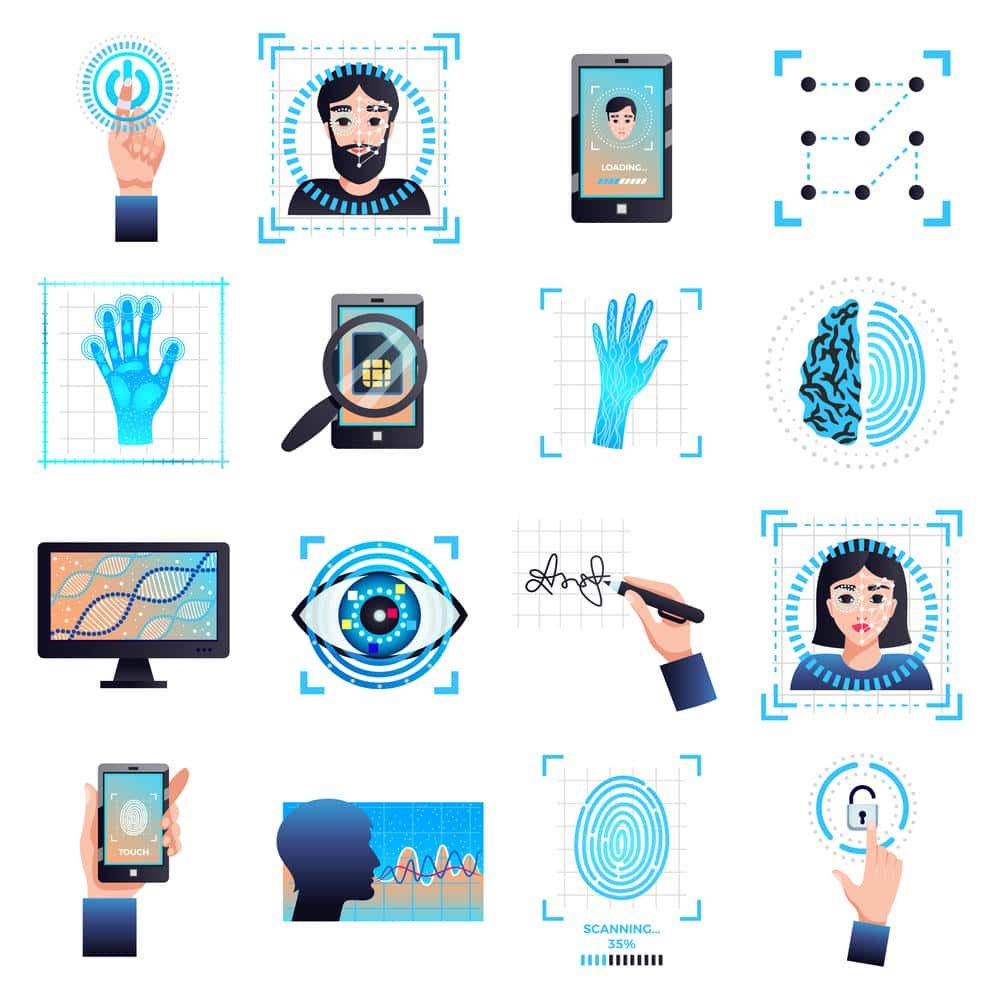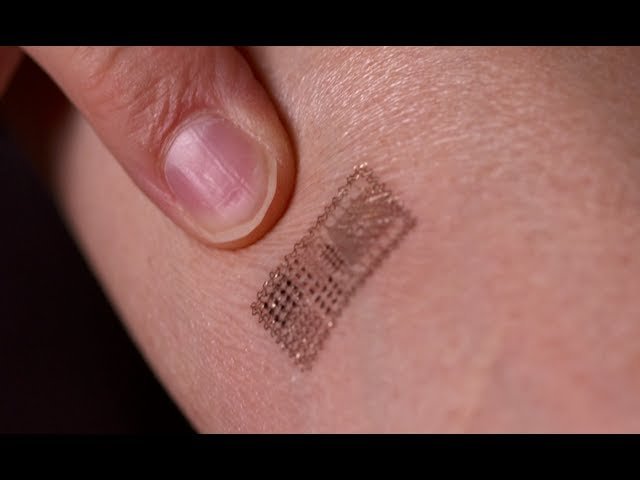Top 13 Wearables Trends in 2025. The world of wearable technology is in constant evolution, buzzing with innovation and the promise of a more connected, healthier, and more efficient future. From simple fitness trackers to sophisticated smartwatches, wearables have already become ubiquitous in our daily lives. But what lies ahead? As we approach 2025, it’s time to peer into the crystal ball and explore the top 13 wearable trends that are poised to shape the landscape of this dynamic industry.
This article delves into the emerging technologies, evolving consumer needs, and shifting market dynamics that will define the wearable experience in the coming years. We’ll move beyond the hype and focus on realistic and impactful advancements, providing you with a comprehensive overview of what to expect from your wrist, your ears, and beyond.
Top 13 Wearables Trends in 2025
Let’s dive into it.

1. Hyper-Personalized Health Monitoring: Beyond Basic Metrics
While current wearables offer basic health metrics like heart rate, sleep tracking, and activity levels, 2025 will see a significant leap towards hyper-personalized health monitoring. Expect more sophisticated sensors capable of:
Continuous Glucose Monitoring (CGM):

Non-invasive CGM technology integrated into smartwatches and other wearables will become increasingly prevalent, empowering individuals with diabetes to manage their condition more effectively and discreetly. This could even extend to pre-diabetic individuals, providing proactive insights into their metabolic health.
Stress Level Detection via Cortisol Monitoring:

Innovative sensors measuring cortisol levels through sweat or other bodily fluids will provide real-time stress level insights, allowing users to identify triggers and implement proactive stress management techniques.
Early Disease Detection:

Wearables will leverage AI and machine learning to analyze patterns in collected data and potentially detect early signs of diseases like atrial fibrillation, sleep apnea, and even early stages of certain cancers. Think preventative healthcare on your wrist, alerting you to potential problems before they become serious.
Microbiome Analysis Integration:

In the future, wearables could be paired with at-home microbiome testing kits, integrating the results directly into your health dashboard. This will provide personalized dietary and lifestyle recommendations based on the unique composition of your gut flora, leading to targeted improvements in overall well-being.
2. The Rise of Hearables: More Than Just Headphones
Hearables, or smart earbuds, are evolving beyond simple audio devices. In 2025, they will become intelligent companions with a wider range of capabilities, including:
Augmented Hearing:

Advanced noise cancellation and speech enhancement technologies will allow users to selectively filter sounds and focus on conversations in noisy environments.
Real-Time Language Translation:

Seamless, real-time language translation directly in your ear will break down communication barriers and facilitate global interactions.
Biometric Authentication:

Hearables will be used for secure biometric authentication, recognizing your unique ear canal acoustics to unlock devices and authorize transactions.
Brainwave Monitoring:

Emerging research is exploring the use of hearables to monitor brainwave activity, potentially detecting cognitive fatigue, stress, and even early signs of neurological disorders. This could revolutionize the way we understand and manage our mental well-being.
3. Embedded Sensors and Smart Clothing: Seamless Integration
The future of wearables extends beyond devices worn on the wrist or in the ears. Embedded sensors and smart clothing are poised to revolutionize how we interact with technology:
Smart Textiles with Integrated Sensors:

Imagine shirts that track your posture, shorts that monitor muscle activity, or socks that detect foot fatigue. Smart clothing with integrated sensors will provide continuous and unobtrusive monitoring of various physiological parameters.
Implantable Sensors for Enhanced Health Monitoring:

While still in the early stages, implantable sensors are showing promise for long-term health monitoring, drug delivery, and even neural stimulation. These devices could revolutionize the treatment of chronic conditions and enhance overall quality of life.
E-Tattoos and Skin Patches:

Flexible and discreet e-tattoos and skin patches will provide continuous monitoring of vital signs, drug delivery, and even haptic feedback. These technologies will be particularly useful for athletes, healthcare professionals, and individuals requiring continuous monitoring.
4. The Metaverse and Wearable Integration: Immersive Experiences
The convergence of the metaverse and wearable technology will create immersive and interactive experiences that blur the lines between the physical and digital worlds:
Haptic Feedback Suits and Gloves:

Haptic feedback suits and gloves will allow users to feel and interact with virtual objects in the metaverse, creating a more realistic and engaging experience.
AR/VR Wearables for Enhanced Collaboration:

Augmented reality (AR) and virtual reality (VR) wearables will facilitate remote collaboration, allowing users to interact with virtual environments and collaborate on projects as if they were physically present.
Wearable Controllers for Metaverse Navigation:

Wearable controllers, such as wristbands and rings, will provide intuitive and natural ways to navigate and interact with the metaverse.
5. Enhanced Data Privacy and Security: Protecting Your Information
As wearables collect increasingly sensitive data, enhanced data privacy and security measures will become paramount:
On-Device Data Processing:

More data processing will occur directly on the device, reducing the need to transmit sensitive information to the cloud.
End-to-End Encryption:

Secure end-to-end encryption will protect data during transmission, ensuring that only authorized parties can access your information.
Biometric Authentication for Enhanced Security:
Biometric authentication methods, such as fingerprint scanning and facial recognition, will be used to secure wearables and prevent unauthorized access to your data.
Transparent Data Policies and User Control:
Wearable manufacturers will be more transparent about their data collection practices and provide users with greater control over their data, allowing them to opt out of data sharing and customize their privacy settings.
6. Personalized Coaching and AI-Powered Insights: Guiding Your Health Journey
Wearables will leverage AI and machine learning to provide personalized coaching and actionable insights based on your data:
AI-Powered Fitness Coaches:
AI-powered fitness coaches will provide personalized workout plans, nutrition recommendations, and motivational support based on your fitness goals and performance.
Sleep Optimization Programs:
Wearables will analyze your sleep patterns and provide personalized recommendations for improving sleep quality, such as adjusting your bedtime, optimizing your sleep environment, and incorporating relaxation techniques.
Stress Management Tools:
Wearables will detect stress triggers and provide personalized recommendations for managing stress, such as mindfulness exercises, breathing techniques, and guided meditations.
7. Improved Battery Life and Charging Technologies: Untethering from the Outlet
Battery life has always been a limiting factor for wearables. In 2025, expect significant advancements in battery technology and charging methods:
More Efficient Batteries:
New battery chemistries and energy-efficient components will extend battery life significantly, allowing users to wear their devices for longer periods without needing to recharge.
Wireless Charging and Energy Harvesting:
Wireless charging will become ubiquitous, and energy harvesting technologies, such as solar and kinetic energy harvesting, will supplement battery power and potentially eliminate the need for traditional charging.
Ultra-Low Power Consumption Modes:
Wearables will automatically switch to ultra-low power consumption modes when not in use, further extending battery life.
8. Gamification and Social Integration: Making Health Fun and Engaging
Gamification and social integration will play a key role in motivating users to adopt healthier habits:
Gamified Fitness Challenges:
Wearables will offer gamified fitness challenges with rewards and virtual badges, encouraging users to stay active and compete with friends.
Social Sharing and Leaderboards:
Users will be able to share their progress and achievements with friends and family, fostering a sense of community and motivation.
Virtual Reality Fitness Games:
VR fitness games will provide immersive and engaging workout experiences, making exercise more fun and less like a chore.
9. Medical-Grade Accuracy and Regulatory Approvals: Wearables as Medical Devices
As wearables become more sophisticated, they will increasingly be used for medical applications, requiring medical-grade accuracy and regulatory approvals:
FDA-Cleared Wearables for Specific Medical Conditions:
We can expect to see more FDA-cleared wearables designed for specific medical conditions, such as atrial fibrillation monitoring, sleep apnea detection, and glucose monitoring.
Remote Patient Monitoring:
Wearables will be used for remote patient monitoring, allowing healthcare providers to track patients’ vital signs and health data remotely, improving access to care and reducing the need for hospital visits.
Telehealth Integration:
Wearables will be integrated with telehealth platforms, allowing patients to communicate with healthcare providers and receive remote consultations.
10. Modular and Customizable Wearables: Tailoring to Your Needs
The future of wearables will be about personalization and customization. Modular designs will allow users to swap out components and tailor their devices to their specific needs:
Interchangeable Sensors:
Users will be able to swap out sensors to focus on specific health metrics, such as heart rate, sleep, or stress.
Customizable Straps and Bands:
A wide range of straps and bands will be available to match different styles and activities.
Software Customization:
Users will be able to customize the software interface and features to suit their individual preferences.
11. The Expansion of Wearables for Kids and Seniors: Addressing Diverse Needs
Wearable technology is not just for adults. We will see an expansion of wearables designed specifically for kids and seniors:
Wearables for Kids with GPS Tracking and Communication Features:
These devices will allow parents to track their children’s location and communicate with them easily.
Wearables for Seniors with Fall Detection and Emergency Assistance:
These devices will provide seniors with added safety and security, alerting emergency contacts in the event of a fall or other emergency.
Wearables for Cognitive Support:
Devices designed to aid memory and cognitive function for seniors will become more prevalent.
12. Ethical Considerations and Responsible Design: Building Trust
As wearables become more integrated into our lives, it’s crucial to address the ethical considerations and ensure responsible design:
Data Transparency and User Control:
Users must have clear and transparent information about how their data is being collected, used, and shared.
Data Security and Privacy Protection:
Robust security measures must be implemented to protect users’ data from unauthorized access and misuse.
Bias Mitigation in AI Algorithms:
AI algorithms used in wearables must be carefully designed to avoid bias and ensure fair and equitable outcomes.
Addressing Potential Health Disparities:
Wearable technology should be accessible to all individuals, regardless of their socioeconomic status or geographic location.
13. Sustainable and Eco-Friendly Wearables: Minimizing Environmental Impact
As consumers become more environmentally conscious, there will be a growing demand for sustainable and eco-friendly wearables:
Recycled and Recyclable Materials:
Wearable manufacturers will increasingly use recycled and recyclable materials in their products.
Energy-Efficient Designs:
Wearables will be designed to consume less energy, reducing their environmental impact.
Responsible Manufacturing Practices:
Manufacturers will adopt responsible manufacturing practices that minimize waste and pollution.
Extended Product Lifecycles:
Products will be designed for longevity and easy repairability, reducing the need for frequent replacements.
Conclusion: The Wearable Future is Bright (and on Your Wrist)
The wearables landscape in 2025 will be vastly different from what we see today. These top 13 trends highlight a future where wearables are more personalized, integrated, and intelligent. From proactive health monitoring and immersive metaverse experiences to enhanced data privacy and sustainable designs, the wearable technology of tomorrow promises to improve our lives in profound ways. By staying informed about these emerging trends, you can be prepared to embrace the wearable revolution and unlock the full potential of this transformative technology.


